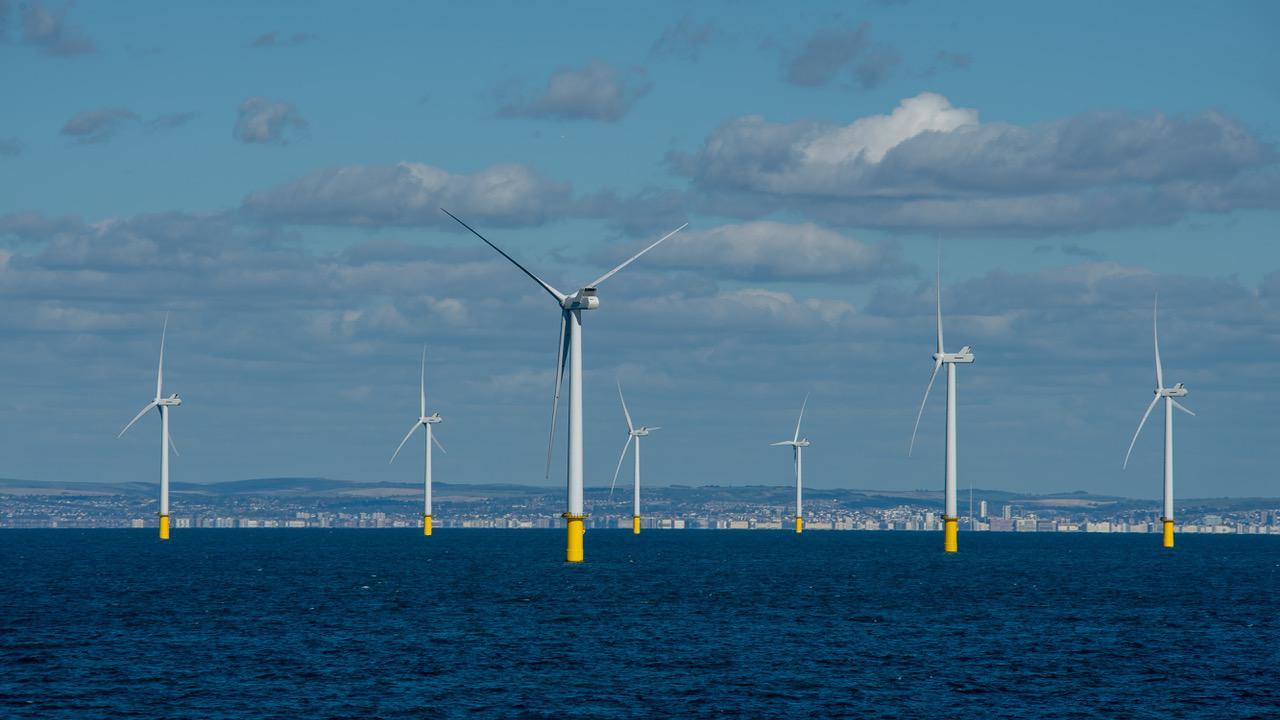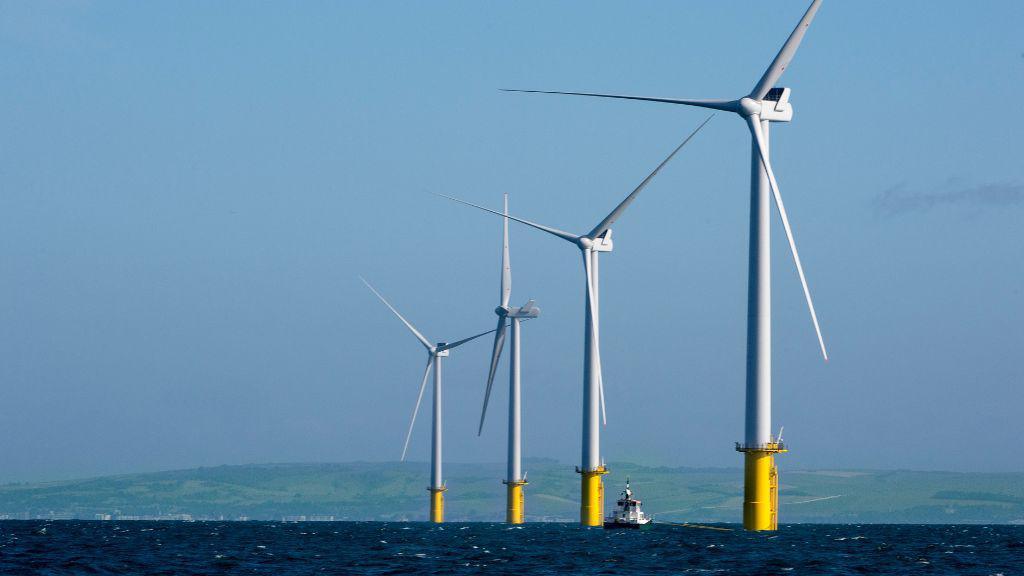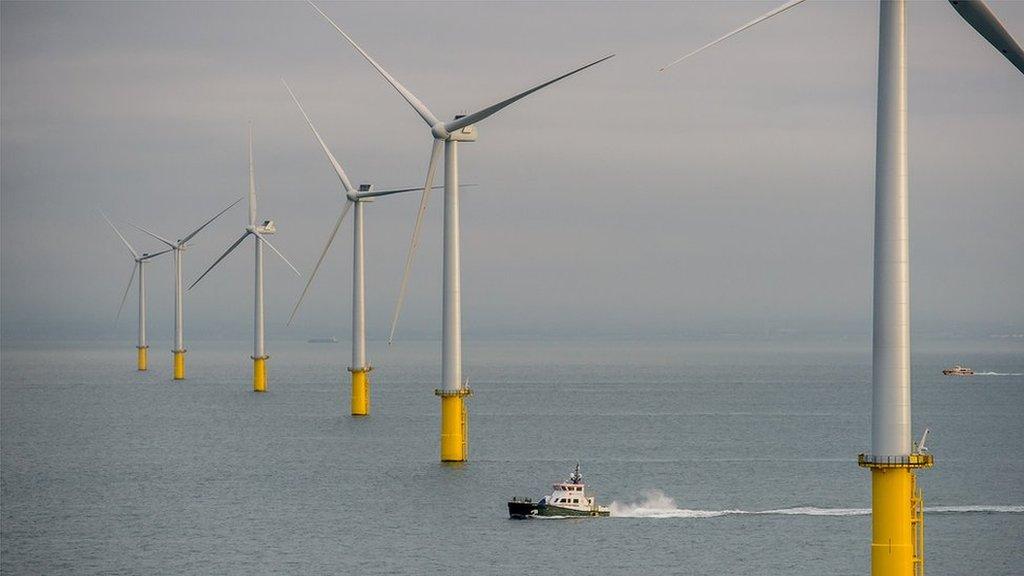Offshore windfarm extension accepted by inspectors

If consented, up to 90 new turbines would be built to create Rampion 2
At a glance
A windfarm expansion application has been accepted for examination by the planning inspectorate
If given consent, up to 90 new turbines will be built to create Rampion 2
Construction could start in late 2026
- Published
An application to extend a windfarm off the coast of West Sussex has been accepted for examination by the planning inspectorate.
If given consent, up to 90 new turbines will be built to create Rampion 2 - doubling the size of the existing windfarm.
The site would be able to power the equivalent of all of the homes in Sussex twice over, developers said.
"Our goal throughout has been to progress the development of our cable route design in light of feedback received from local communities, while minimising, where possible, wildlife and the environmental impacts," project leader Umair Patel said.
The new turbines would be between 1.5-2.3 times the height of the existing turbines, with Rampion 2 able to reduce carbon emissions by about 1.8 million tonnes, RWE Renewables said.
An offshore export cable route would bring power ashore under Climping Beach, near Littlehampton, and the underground cable route would continue inland to a new substation called Oakendene, near Cowfold.
It would then connect the power to the national grid at Bolney.

Should the project achieve consent, construction could start in late 2026
“As part of our journey to date, we have carried out a huge programme of engagement and consultation over the past three years, and have subsequently made changes to the project proposals in response to feedback from statutory consultees and the Sussex community,” Mr Patel said.
After RWE Renewables launched its public consultation in 2021, the Rampion 2 site was reduced by nearly half in response to feedback.
The examination process is expected to take six months, and a final decision will be made by the secretary of state for the Department of Energy Security and Net Zero by early 2025.
Should the project achieve consent, construction could start in late 2026, with the windfarm fully operational before the end of the decade.
Follow BBC South East on Facebook, external, on Twitter, external, and on Instagram, external. Send your story ideas to southeasttoday@bbc.co.uk, external.
- Published17 October 2022

- Published14 June 2023

- Published3 February 2022
